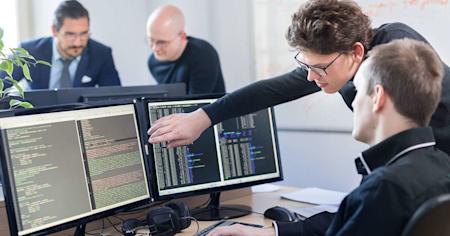The use of remote desktop software has increased almost three-fold in the past few years and does not look like it is about to slow down. With this change in the market comes many different options for software that might match your needs. So, how do you choose the right remote desktop software for you or your organization?
Below, we list some of the things that you should consider before picking a remote desktop software provider. Some of these are optional, although others may make the difference between whether they meet your standards. So, choose wisely.
Security Features
One of the most essential options for software that will access a remote computer is the kind of security that you want. The following are some of the remote desktop security features that you should look for in your search:
Device Authentication
Device authentication, or endpoint authentication, prevents unauthorized devices from connecting to a remote computer. Your remote desktop platform should have the capacity to whitelist a set group of devices that can log in. Should devices outside of that list attempt to log in to a remote desktop without authenticating, the system will deny access.
Two-Factor Authentication
This ensures that a person is a legitimate user by allowing them to confirm their identity through more methods than a single password. 2FA provides a high level of protection for an account when layered on top of the password, keeping your computers and data secure.
Compliance with Security Standards
You should ensure that whichever remote access software you use abides by your security standards. These standards may be legally required, or you can check to see which voluntary compliance the software abides by.
Examples of security standards that may be of interest to you include:
General Data Protection Regulation (GDPR)
System and Organization Controls (SOC 2)
Health Insurance Portability and Accountability Act (HIPAA)
Family Educational Rights and Privacy Act (FERPA)
Peripheral Component Interconnect (PCI)
You should also check to ensure that the software receives regular software updates. This will show that the creators are likely to update their security protocols when they become aware of potential threats. They are also likely to ensure that any new issues are resolved fast.
High-Quality UX
If you’re trying to get work done remotely, the last thing you want is for it to be hard to remotely control your computer. What you instead want is for the remote desktop software’s interface to have clear controls and for it to be as fast, easy to use, and seamless as possible. This will make it feel as if you were using the remote PC in-person.
A remote desktop tool should offer a free trial so you can get hands-on experience with the platform to see if the UX is right for you.
Ease of Installation
On top of an easy-to-use interface, one should not have difficulty installing any remote desktop applications. This goes for both the software that needs to be on the remote computer to allow access as well as apps on the local devices.
This does not only relate to the installation of the software on the device but also the steps one must take to attempt their first login. If the user must do too much before they can use the software in earnest, it will cause them to draw away and not remain interested in its use.
Value
One of the steps you should complete when looking at remote desktop software is comparing software costs. There are many solutions out there that cost an arm and a leg. Likewise, there are many free remote desktop products out there, but they are often severely lacking in terms of functionality, device support, features, security, or all of the above.
Make sure to inspect every application’s price and what it offers. It may be cheap for only one or two users, but it becomes expensive in bulk. Or, there might be different prices for individuals compared to organizations.
Access via Phone or Tablet
Many remote desktop applications allow for access via another desktop machine. It is rarer to find ones that allow one to access a desktop via a phone or tablet.
You should ensure that you can connect to your desktop from any other device. And you should also ensure that no matter what kind of device or platform you’re accessing from, you’ll still be able to leverage the full functionality of your remote computer.
Productivity-Enhancing Features
One of the more important remote desktop software features is the capability to send or receive files. Doing this means that you can push data, presentations, or other items to your computer for later when you need them.
Features to look out for include file transfer, remote printing, multi-monitor support, remote wake-on-LAN, and chat.
High-Class Customer Service
No matter which system you use, now and then you might have questions or concerns. Check before you buy that the company you are working with has very good customer service systems.
If they do, you know that they treat their customers well and will likely not stall you when you need help.
Choose Remote Desktop Software that Works for You
You should now have a much better idea of the kind of things that you will need to consider when you choose remote desktop software for your business. Although the truth is, there is only one option if you want the best choice for whatever you need in the future. That is Splashtop remote desktop.
Splashtop stands out due to:
Industry-leading remote access security
Broad device support – access any Windows, Mac, or Linux computer from any Windows, Mac, iPhone, iPad, Android, and Chromebook device
Wide range of top features
Splashtop offers remote desktop solutions for working remotely, IT support, and more. Get started with a free trial now to find out why Splashtop consistently earns the highest reviews from third-party and peer-to-peer review sites.


